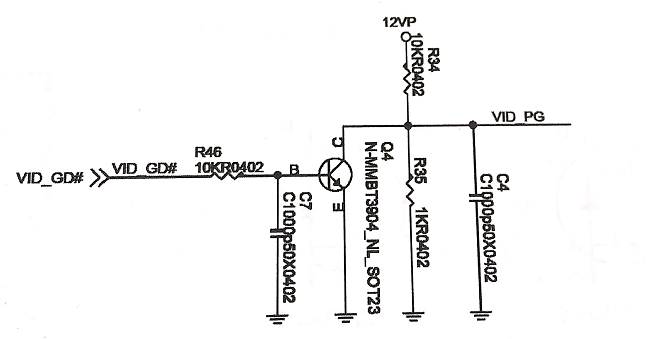What are the application of transistor?
1. Introduction of Triode.
Triode full-name semiconductor Triode, also known as bipolar transistor, with the letter Q,PQ. Triode is a kind of semiconductor device controlled by current. Its function is to amplify the weak signal into a large amplitude electric signal and also to be used as a contactless switch.
Triode has three poles: base B, collector C, emitter E. In the object, the transistor is right for its left foot is B pole, middle foot is C pole, right foot is E pole, as shown in figure 1.
The transistor used in the main board is divided into NPN type transistor and PNP type transistor according to the structure. The circuit symbol is shown in Fig. 2. The E pole arrow points to the B pole for the PNP type transistor, and the arrow to the outside for the NPN type transistor. NPN Triode is used in the motherboard more.

Fig.1 Triode object Fig.2 Triode symbol
2. Switching Triode.
Triode is widely used in computer board circuit, most of which use NPN type Triode, such as 1AM、W04、T04. On the main board, the transistor emitter is grounded by switch action. The relation between B pole and C is very inverse, that is, when B pole input high current, C is extremely low level, B pole input low current time, C is extremely high level. When B is extremely 0.7 V and C is less than 0.7 V after electrification, C is extremely high.
The transistor switch circuit is shown in figure 3, and the Q4 in the loop is a switching transistor. When the VID_PG# signal of the B pole is higher than 0.7 V, the Triode Q4 C,E pole is grounded, which makes the VID_PG signal in a low level state. If the VID_GD# of the B pole is in a low level state, the C, E pole of the Triode Q4 is not on. The VID_PG signal is pulled up to a high level state through the partial voltage of the resistor R34 / R35. A simple and effective switch circuit is realized by controlling Q4 conduction and cutoff by VID_DG#.

Fig.3 Triode switch application circuit
3. Triode common type.
Small NPN tubes: lAM, W04, WIP, T04, S04, *1p. *04. ..
Large NPN tubes: C5001, C5706. C5707.
Small PNP tubes: W06, TO6, *06,.
Large PNP tube: B1202.
4. Triode judge.
Off-line measurement: use digital multimeter diode blocking. The NPN Triode is connected to the B pole with the red table pen, and the black meter pen contacts the C pole to show the value of about 500; Black watch pen contact with E pole will also show about 500 values. Black watch pen and pole red watch pen contact C pole display 500 or so, red watch pen contact E pole will also show 500 right value. A value of 0 indicates a short circuit of the transistor, while a value of 1 or OL indicates an open circuit of the transistor.
On-line measurement: online measurement only for the switching action of the Triode. The main board is electrified, the digital multimeter hits the straight line 20V voltage block, the black meter pen grounding red meter pen contacts the Triode B pole first, then the C pole.If B has 0.7 V voltage, C must be 0 V, and when B is 0 V, C should be 1 V or 3.3 V (see how many volts C pole pull-up power supply is).
This article is from Allicdata Electronics Limited.

